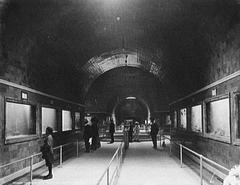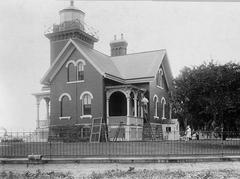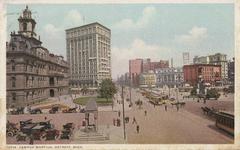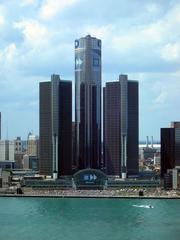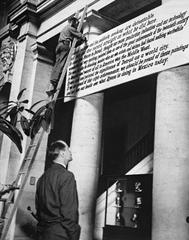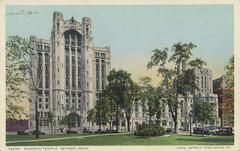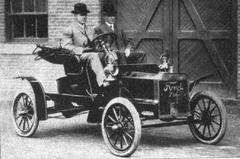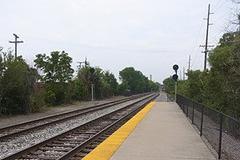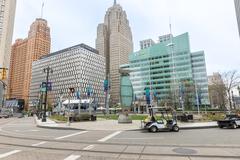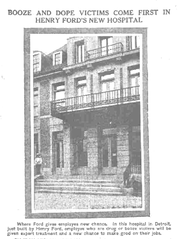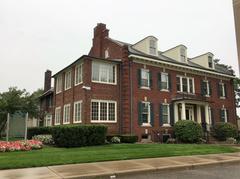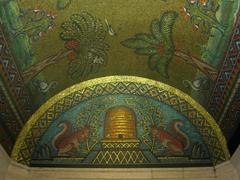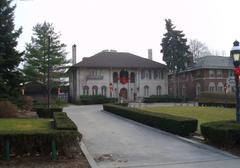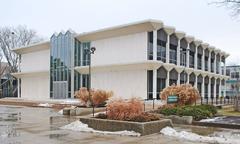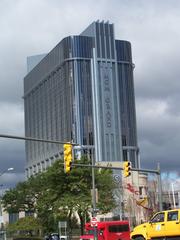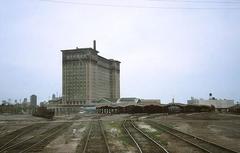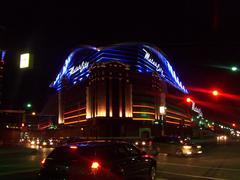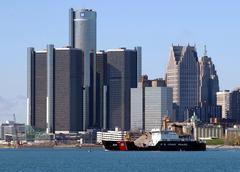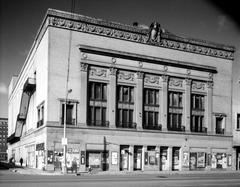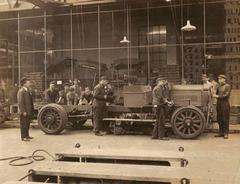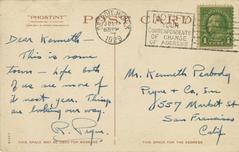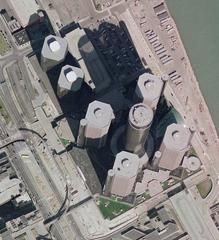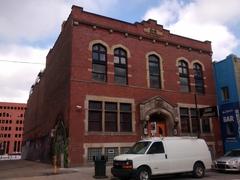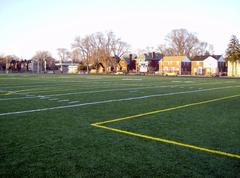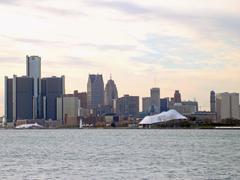
Samuel L. Smith House Detroit: Visiting Hours, Tickets, and Historical Guide
Date: 04/07/2025
Introduction
The Samuel L. Smith House is a cornerstone of Detroit’s historical landscape, blending the city’s early settler legacy with its Gilded Age architectural brilliance. Located in Midtown’s Woodbridge Neighborhood Historic District, this house not only showcases rare log cabin construction and ornate Queen Anne–Romanesque Revival design but also tells the story of Detroit’s transformation from a modest frontier outpost to a thriving industrial and cultural metropolis. Whether you’re a history buff, architecture enthusiast, or cultural traveler, the Samuel L. Smith House offers an immersive journey through Detroit’s past, present, and future (Outlier Media, Detroit Historical Society, Wayne State University).
Table of Contents
- Early Origins and Construction
- 19th-Century Detroit: Historical Context
- Architectural Features and Significance
- Preservation and Restoration
- Visiting the Samuel L. Smith House
- Cultural Impact and Educational Value
- The House in Detroit’s Heritage
- Challenges and Preservation Efforts
- Visitor Amenities and Tips
- Nearby Attractions
- Frequently Asked Questions (FAQ)
- Conclusion
- References & Further Reading
Early Origins and Construction
The Samuel L. Smith House is among Detroit’s oldest surviving homes, with origins tracing back to land purchased by Samuel L. Smith in 1829. By 1850, a house was already documented on the property, representative of the city’s Boomtown era (1820–1860) as Detroit rapidly expanded (Outlier Media, Detroit Historical Society).
The original structure is a rare log cabin—one of only two such buildings still standing within Detroit city limits—highlighting early settlers’ practical approach to construction. Built with hand-hewn timbers and a compact footprint, the house reflects the resourcefulness required for survival in 19th-century Michigan.
19th-Century Detroit: Historical Context
Emerging from its French colonial roots, Detroit experienced significant growth after the War of 1812. The Smith House was built during a period when Detroit’s population surged, and its economy flourished thanks to its strategic position along the Detroit River. Initially surrounded by farmland and woodlands, the house has witnessed Detroit’s evolution into a major urban center (Detroit Historical Society).
Architectural Features and Significance
Original Structure
- Log Construction: Hand-hewn logs and original wood beams, indicative of early American frontier architecture.
- Minimal Ornamentation: Emphasis on function and durability over decorative elements.
1889 Mansion Expansion
In 1889, Detroit architects Rogers and MacFarlane transformed the property with a Queen Anne–Romanesque Revival mansion. Notable features include:
- Queen Anne Elements: Asymmetrical massing, cross-gabled roof, and a signature round corner tower.
- Romanesque Details: Heavy rounded entry arch and robust masonry.
- Colonial Revival Touches: Decorative window treatments, including a Palladian window and fanlight.
The house’s distinctive combination of styles and surviving original materials make it a significant example of Detroit’s architectural evolution (Wikipedia: Architecture of Metropolitan Detroit).
Preservation and Restoration
By the early 21st century, the Samuel L. Smith House had fallen into disrepair due to vacancy and neglect. In 2019, preservationists acquired the property and began meticulous restoration to stabilize the structure, repair water damage, and conserve original materials (Outlier Media). Their efforts reflect Detroit’s broader challenges and successes in historic preservation (Wikipedia: Architecture of Metropolitan Detroit).
Visiting the Samuel L. Smith House
Hours and Tickets
- Typical Hours: Thursday–Sunday, 10:00 AM–4:00 PM (seasonal adjustments possible—check the official website before visiting).
- Admission: $12 adults, $8 seniors and students, children under 12 free. Special events may have separate pricing.
- Tickets: Purchase online or on-site; advance booking recommended for special events.
Accessibility
- Wheelchair Access: Main entrance ramp and first-floor accommodations; upper floors accessible only by stairs.
- Amenities: On-site restrooms, climate control, coat racks, and lockers.
Getting There and Parking
- Location: 5035 Woodward Avenue, Detroit, MI 48202.
- Transit: QLINE streetcar and multiple bus routes. Ample street and public lot parking nearby (Visit Detroit).
Guided Tours & Events
- Guided Tours: Available by appointment and during open house events, typically lasting 45–60 minutes. Knowledgeable docents provide insight into the house’s architecture and the Smith family’s role in Detroit history.
- Special Events: Seasonal art exhibitions, lectures, workshops, and Victorian-themed celebrations. Educational programs for schools and community groups are regularly scheduled (Detroit Historical Society).
Cultural Impact and Educational Value
The Samuel L. Smith House is a vital educational resource, offering a window into Detroit’s early days and Gilded Age affluence. Its programming fosters community pride and connects residents and visitors with the city’s layered heritage. Partnerships with local organizations and educational institutions ensure inclusive, engaging programming (Detroit Historical Society, Urban Utopias).
The House in Detroit’s Heritage
As one of only four surviving Victorian mansions on Woodward Avenue, the Samuel L. Smith House anchors Detroit’s architectural legacy. Its presence, alongside nearby landmarks like the Col. Frank J. Hecker House and the Charles Lang Freer House, situates it within a historical and cultural corridor central to Detroit’s identity (Wayne State University).
Challenges and Preservation Efforts
Ongoing maintenance, urban development pressures, and funding are persistent challenges. Restoration has succeeded thanks to grants, tax incentives, and community support, exemplifying the collaborative spirit of Detroit’s preservation movement (Outlier Media, Urban Utopias).
Visitor Amenities and Tips
- Gift Shop: Offers books, postcards, and Detroit-themed gifts.
- Restrooms: Available on-site.
- Refreshments: Served during select events.
- Photography: Allowed without flash or tripods; videography by permission.
- Dress: Wear comfortable shoes; layered clothing is recommended.
Nearby Attractions
The Midtown location puts you within walking distance of:
- Detroit Institute of Arts
- Detroit Historical Museum
- Motown Museum
- Local dining and shopping along Woodward Avenue (Tourist Secrets: Detroit Dining)
- Eastern Market
Frequently Asked Questions (FAQ)
Q: What are the Samuel L. Smith House’s regular visiting hours?
A: Thursday–Sunday, 10:00 AM–4:00 PM; check the official website for updates.
Q: How much is admission?
A: $12 for adults; discounts for students/seniors; children under 12 free.
Q: Are guided tours available?
A: Yes, by appointment or during scheduled open house events.
Q: Is the house accessible?
A: The main entrance and first floor are wheelchair accessible; upper floors by stairs only.
Q: Can I take photos?
A: Yes, non-flash photography is allowed.
Q: Where do I park?
A: Street parking and public lots are nearby; public transit is recommended during peak times.
Conclusion
The Samuel L. Smith House is an essential destination for anyone seeking to understand Detroit’s rich history, architectural diversity, and spirit of resilience. Through its preserved structures, curated tours, and community programming, it offers a living narrative of the city’s journey from pioneer days to industrial powerhouse. Whether you’re a first-time visitor or a lifelong Detroiter, a visit to this landmark promises insight, inspiration, and a deeper appreciation for Detroit’s ongoing story.
For the latest information on hours, tickets, and events, visit the official website or download the Audiala app for digital tours and exclusive content.
References and Further Reading
- Outlier Media: Visiting the Samuel L. Smith House
- Detroit Historical Society: Timeline
- Wikipedia: Architecture of Metropolitan Detroit
- Wayne State University: Samuel L. Smith House
- Detroit Historical Society: Woodbridge Neighborhood Historic District
- Urban Utopias: Detroit Historical Development
- Visit Detroit: Plan Your Visit
- National Register of Historic Places


